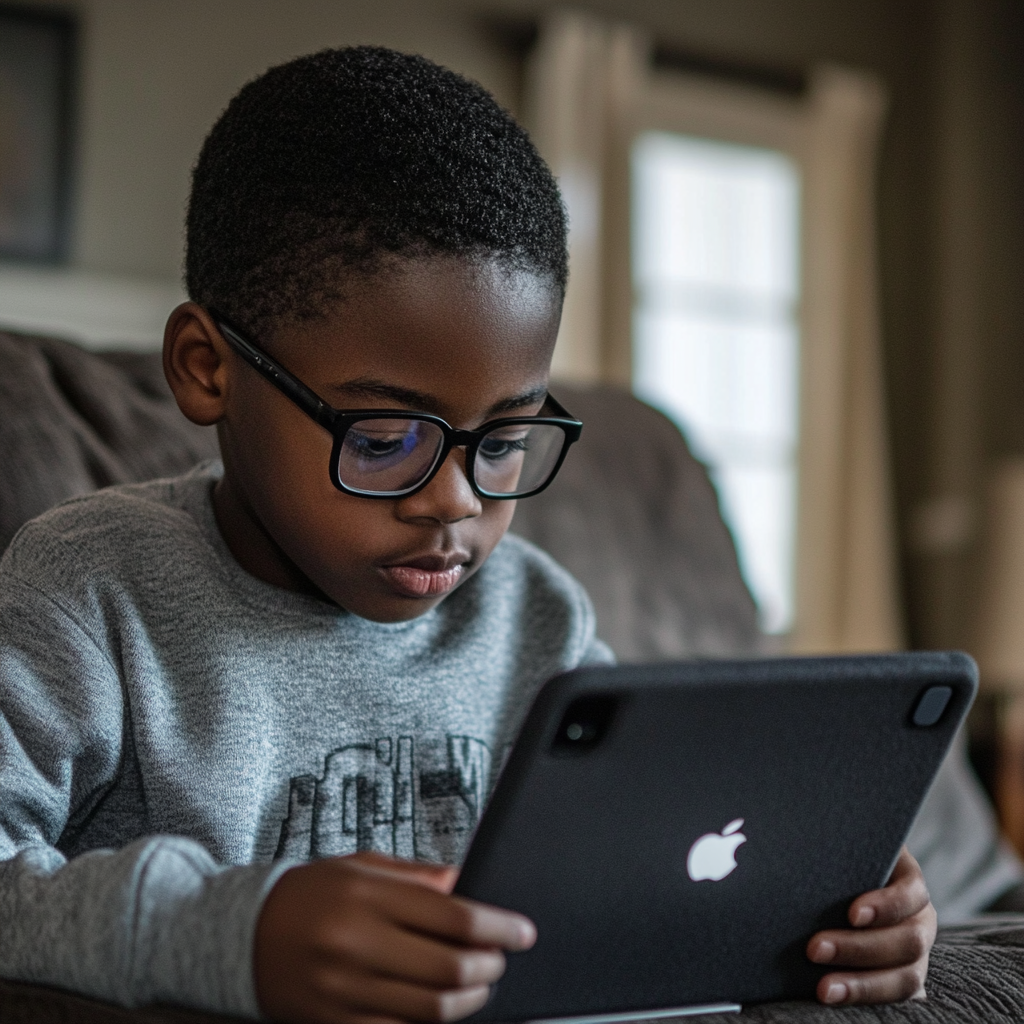Dealing with the IPad Generation

The “iPad Generation” is an era where technology plays a central role in children’s lives. Initially, many parents believed that integrating iPads and other tablets into their children’s education would enhance learning, especially in areas like literacy. The idea was that these devices would provide interactive and engaging ways for children to improve their reading and writing skills. However, as this generation matures, it’s becoming evident that this reliance on technology may not be as beneficial as initially thought. Many students are now falling behind in key academic areas, particularly literacy, as a direct result of excessive screen time.
A significant concern is that although some educational apps can aid literacy, they are only effective when used in a structured manner. A study conducted by Deena Reyes explored the impact of iPad apps on literacy achievement for second and third graders. While students using specific literacy-based apps did show improvements, these gains were only realized in environments where teachers closely monitored and directed their usage [Source: Effects of IPads on Students]. Without this structured approach, students often use iPads more for entertainment than education, leading to a decline in essential literacy skills like reading comprehension and writing. This issue is exacerbated by the fact that iPads are often used as a convenient distraction for children rather than a tool for learning.
One reason for this decline is that passive activities, such as watching videos or playing non-educational games, do little to challenge students’ cognitive skills. Unlike reading physical books, which engages multiple brain regions and encourages deep processing, passive screen time does not promote the same kind of brain activity. Children who spend hours on iPads are often less able to focus on detailed, structured tasks, which affects their reading comprehension and ability to engage with complex texts.
Taking Control of the iPad Generation
Parents can take control of this situation by structuring afterschool or homeschooling time more effectively. For example, rather than allowing children to have unrestricted access to screens, parents can implement specific time blocks for technology use. One parent shared their successful approach: after school, they set aside 30 minutes for their child to complete reading assignments from physical books. Following this, they allow the child 20 minutes of supervised iPad time to use apps specifically designed to improve vocabulary or comprehension. The iPad usage is integrated into the learning process, not as a replacement for traditional learning tools, but as a supplement. This method helps maintain balance and ensures that technology is used as an aid, not a crutch.
Parents involved in homeschooling also face challenges with technology, but they have the opportunity to better control their child’s exposure to screens. By designing a homeschool schedule that blends offline activities like reading, writing, and hands-on projects with a limited, purposeful use of technology, parents can create a more well-rounded learning experience. For example, after completing a reading comprehension exercise, students could use an iPad app to create a visual representation of the story they just read. This encourages them to apply what they’ve learned while still incorporating technology in a meaningful way.
An added benefit of this approach is the opportunity for parents and children to engage in the learning process together. Sitting down with a child to discuss what they’ve read or helping them complete a writing assignment fosters critical thinking and communication skills. Moreover, involving children in discussions about screen time and helping them understand the reasons for limiting it can empower them to make better choices when using technology independently.
Additionally, it’s essential for parents to work in tandem with teachers to ensure students remain on track academically. Teachers can provide valuable insight into a child’s progress and suggest strategies to improve literacy. For instance, teachers may recommend specific reading materials or apps that align with the curriculum, ensuring that the child’s use of technology supports classroom goals. Parents can reinforce this by following up on homework, ensuring it’s completed without excessive reliance on digital tools, and providing guidance when necessary.
Excessive Use of the iPad
Studies have also shown that early exposure to excessive screen time can affect more than just academic performance. Research has found that overuse of devices like iPads can impact fine motor skills, which are crucial for handwriting and other hands-on activities required in literacy development [Sources: Influence of iPads, Does IPad Support Learning]. In addition to reading challenges, children may struggle with writing tasks due to limited practice with traditional pen-and-paper methods. This further underscores the importance of balancing screen time with physical, interactive learning experiences.
In conclusion, while iPads and other devices have the potential to enhance learning, they are most effective when used in a balanced and structured manner. Parents must monitor and limit their children’s screen time, ensure they engage in hands-on learning, and collaborate closely with teachers to support academic progress. By taking an active role in managing how technology is used at home, parents can help prevent the negative impact excessive screen time has on literacy and ensure their children remain engaged, challenged, and on track to meet grade-level expectations. For those interested in more detailed studies, further reading can be explored through studies like this one on iPads and literacy and this exploration of comprehension and technology use [Source: Comprehension and iPads].
